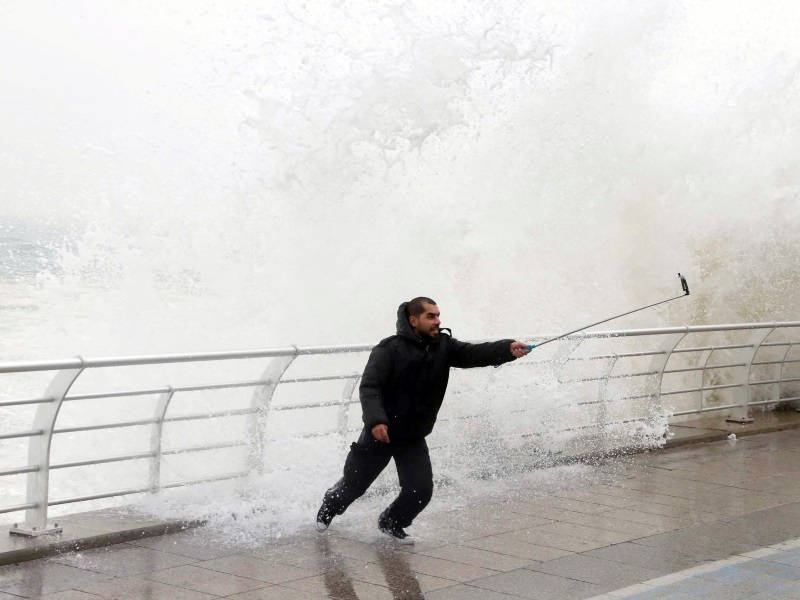Selfie Madness: Too Many Dying to Get the Picture


The rise of selfie photography in some of the world’s most beautiful,
and dangerous, places is sparking a range of interventions aimed at
combating risk-taking that has resulted in a string of gruesome deaths
worldwide.
The act of taking a picture of oneself with a mobile phone,
placing the subject centre-stage, has exploded in popularity in recent
years, with everyone from Britain’s Queen Elizabeth II to U.S. President
Barack Obama joining in.
But the selfie has also inspired a spate
of risk taking and offensive public behaviour, pushing the boundaries
of safety and decorum, whether by dangling from a skyscraper or posing
with live explosives.
Several governments and regulatory bodies
have now begun treating the selfie as a serious threat to public safety,
leading them to launch public education campaigns reminiscent of those
against smoking and binge drinking.
Dozens of grisly
selfie-related deaths and injuries in early 2015 led Russia’s Interior
Ministry to launch a campaign warning avid mobile phone snappers about
the danger of, among other things, posing for a selfie with a lion.
In
June, two men in the Ural Mountains died after posing pulling the pin
from a hand grenade; in May a woman survived shooting herself in the
head in her Moscow office; a month later a 21-year-old university
graduate plunged 40 feet (12 metres) to her death while posing hanging
from a Moscow bridge.
“A cool selfie could cost you your life,”
reads a poster from the campaign, which includes safety videos and
information booklets.
Despite Russia’s diplomatic isolation over
its support for separatist rebels in Ukraine, on the issue of dangerous
selfies the Kremlin finds itself in accord with the European Union and
the United States.
In Texas on Wednesday, a 19-year-old father of
two died after shooting himself in the neck during a selfie. In
Yellowstone National Park exasperated officials issued warnings after
five separate selfie takers were gored this summer while standing too
near bison.
The European Union in June proposed a law to
criminalise social media posts containing pictures of landmarks such as
the Eiffel Tower in Paris or Rome’s Trevi Fountain. And in India this
week officials said they were implementing a “no selfie zone” at the
Hindu Kumbh Mela festival over fears they may cause stampedes.
All about me
Yet
despite the risks, selfies are more popular than ever, according to
data from Google Trends. Searches for the term were up eight times in
2014 over the previous year, leading the Internet search giant to dub it
“The Year of the Selfie”.
Selfies tend to attract a type of
person already more likely to push the boundaries of normal behaviour,
says Jesse Fox, an assistant professor of communications at Ohio State
University.
Her research says people exhibiting the so-called Dark
Triad of personality traits – narcissism, Machiavellianism and
psychopathy – are likely to pursue selfie glory regardless of who gets
hurt in the process.
“It’s all about me. It’s putting me in the
frame. I’m getting attention and when I post that to social media, I’m
getting the confirmation that I need from other people that I’m
awesome,” Fox told Reuters.
“You don’t care about the tourist
attraction you’re destroying; you don’t care about annoying people in
your social media feed … you’re not even thinking about the
consequences of your actions, so who cares if you’re dangling off the
side of the Eiffel Tower?”
That has not stopped some countries trying to capitalise on the trend’s popularity.
Tourism
Australia this week launched a campaign promising an opportunity to
take the “World’s Largest Selfie”, aimed at selfie-mad Japan.
They
have installed several so-called GigaSelfie platforms in some of the
country’s most breathtaking environs from which, with an associated app,
visitors can capture an ultra hi-resolution shot taken by a far away
camera.
© Thomson Reuters 2015